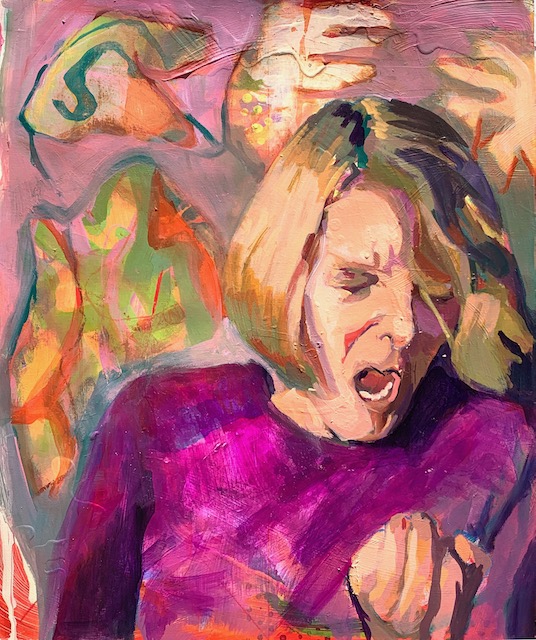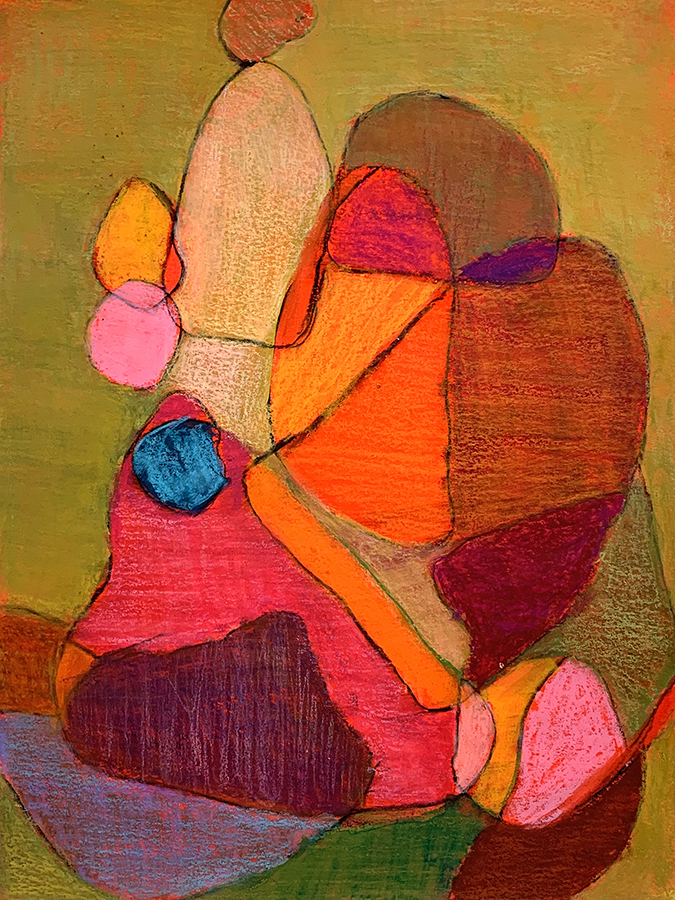Available for Purchase.
"*" indicates required fields
This submission is an inquiry of availability and details but does not guarantee a sale. Thank you for your understanding.

The Rocks of Rhode Island (20211110) , 2021
Mixed media on paper, 12 x 9"
Stones are mute teachers; they silence the observer, and the most valuable lesson we learn from them we cannot communicate.
-Goethe

I am primarily a figurative painter. Making art, however, often requires a pivot from the expected in the face of changing circumstances.
The enthusiasm and empathy with which viewers responded to my Pity of War portraits (2014-2018) encouraged me to push my figurative work farther into the emotional realm. I embarked on a portrait project based on subjects displaying emotional states. As I discovered, this subject has been named—pathognomy.
Different from physiognomy, pathognomy is the study or recognition of emotions and passions through their outward signs or expressions both facial and gestural.
The Pathognomy project began in late 2020 with Hold on Tight, which was based on a frame I captured from a TV drama. A portrayal of an actor portraying an emotion. The project expanded to include portraits of real people expressing emotions. In a further step, I started painting these portraits over abstract collages made of photographs printed on tissue paper, paint and drawn elements.



I intended to continue Pathognomy while in Rhode Island. The only place to work, however, was a windy and often wet screened porch, not suitable for fragile pieces of tissue paper!
The Rhode Island coast is home to thousands upon thousands of stones, rocks, boulders—jagged and smooth, erupting out of the ocean and strewn along the beaches and fields. Every rock has a millennia-long story, a silent tale of fiery convulsions, glacial relocation, oceanic tumbling, and spit up abandonment on the beach. Rhode Island rocks are intriguing, rugged, noisy, and anthropomorphic. Materials and colors are well-represented; granite, marble, slate, igneous.

One day a particular beauty came home in my pocket. I set it on a piece of paper and traced around it with charcoal, then randomly moved it into different positions marking the curves and crevices of its circumference. This supremely delightful and satisfying physical experience was liberating. I had found a new artistic pivot point.
As my collection of beach rocks grew (more than 60 on my final count), I added paint and other drawing materials to the tracings, at first striving for more visual complexity. Most often I traced around the rocks, but sometimes I used a stone’s edge to incise designs into the paper, grooves that trapped the paint.

That early freedom of allowing the rocks to dictate the composition of the painting was pure joy. I relished the chance to experiment, to play. I had very few worries about the outcome of these early paintings. Soon that freedom challenged me to try different visual approaches: did the rocks want to create an ephemeral watery image or a solid muscular one? A complex multi-layered painting or an amalgamation of flat shapes?

The aggregate rock forms began shifting into more recognizable things: landscapes and figures. (Maybe I hadn’t abandoned Pathognomy altogether.) I found that I was increasingly more conscious of the outcome.

Every painting in this series embodies the profound effect the materiality of the rocks had on me. Holding each one in my hand as I moved around its contours was a physical experience completely unlike my normal practice of painting. No less frustrating at times, but often more soothing. Holding the different weights and shapes as I worked connected me to the millennia-long history of Earth and curiously also to the unknown artist who traced her hand over 40,000 years ago on the wall of the El Castillo cave.

The Rocks of Rhode Island series
Studio Practices posts
[cool_tag_cloud on_single_display=”local”]

0 Comments